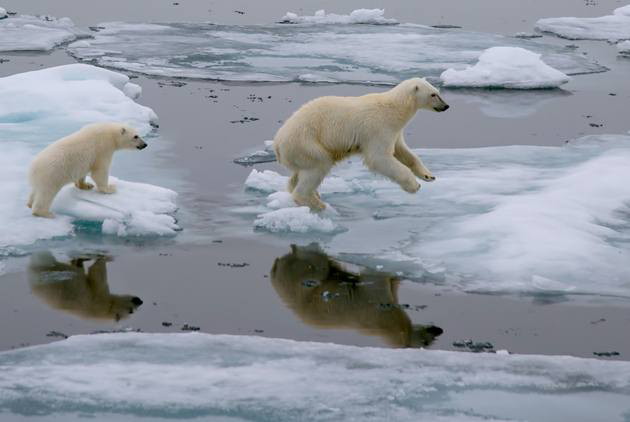EU and U.S. reset transatlantic relations in race for climate neutrality

Source:Shutterstock
Politicians on both sides of the Atlantic have hailed the election of U.S. president Joe Biden as a new beginning for EU-U.S. relations to drive global emissions reduction. However, politics and energy analysts say it might not be all smooth sailing in a relationship that will be marked by competition for technological and diplomatic leadership on the road to climate neutrality. Adding China to the mix makes for a complicated triangle, they say.
Views
EU and U.S. reset transatlantic relations in race for climate neutrality
By Julian Wettengelweb only
Expectations for a new EU-US alliance to drive climate action are high since Joe Biden has taken office as U.S. president - but so are the stakes and potential pitfalls. Politicians and analysts expect the relationship to be marked not only by cooperation, but also by competition and even dissent. Industries on both sides of the Atlantic will continue to compete for profit in rapidly decarbonising markets, and some disputes are unlikely to go away – such as the contentious Nord Stream 2 gas pipeline project.
After four years during which Donald Trump alienated European allies and sent relations across the Atlantic to their lowest since the Second World War, government officials from the European Union and its member states have emphatically welcomed the inauguration of Biden as the starting point of a new phase of transatlantic cooperation and an opportunity to tackle global challenges such as climate change.
Just weeks after Biden’s election, the EU had already put forward a “new EU-U.S. agenda for global change”. In the document, the EU proposes a “green tech alliance” and highlights plans for a carbon border levy as “an opportunity to work together” on setting global templates for CO₂ pricing. But amid the proposal, the EU uses the agenda to make clear it sees itself as the global pioneer on climate. Europe aims to be the first climate neutral continent by 2050 and says it is “leading the way” with its sustainable growth strategy the European Green Deal.
On the other side, new U.S. climate envoy and former state secretary John Kerry told ministers in Europe that the U.S. comes back to the table “with humility”. However, Biden will not be content sitting in anything but the front seat of global climate leadership, says energy analyst Kevin Book of ClearView Energy Partners, a Washington-based research and investment advisory firm.

“For all his humility, Joe Biden is still an American politician. Kerry’s explicit role is to seize back leadership on climate.”
Competition will require cooperation
Two continents competing for climate leadership might not be all that bad, says Jennifer Tollmann, senior policy advisor at think tank E3G in Brussels. “It actually makes it more possible to reach climate neutrality, with competition that drives innovation and change. This nudging, competitive element is exactly what climate politics needed.”
Tollmann sees a clear focus on standards and regulation in the agenda the EU proposed and says this is where competition requires cooperation. Due to the U.S. regulatory standard setting power, the EU is keen to jointly “define the new rules of the game” on sustainable finance, new green technologies, and climate and trade, she says.
We cannot expect only agreement – Merkel
The European Commission portrays its planned CO₂ price on certain imported goods (CBAM – carbon border adjustment mechanism) as a key measure of possible cooperation, despite much scepticism from American politicians and industry stakeholders until now. The Commission aims to make a proposal in mid-2021, but deciding and introducing such a price is likely to take until 2023.
“I think the initial hope for cooperation will be quickly scuttled,” says ClearView’s Book. Unions and lawmakers in an election year 2024 will not be eager to have restrictions on their exported goods and “will push back very ferociously”, he adds. Where the EU and the U.S. have been in a trade war under president Trump, “carbon trade war is where we go next”, says Book.
Among the first heads of government to warn of continued dissent even as the new administration began its work was German Chancellor Angela Merkel. “Don't assume that from tomorrow onwards there will only be agreement,” Merkel told journalists in Berlin. Merkel singled out the contentious Russian-German Nord Stream 2 fossil gas pipeline as one issue of disagreement.
The project is easily the single most prominent energy policy dispute between Europe’s largest economy and the U.S. – and drives a wedge even between Germany and some of its neighbours many of which would like for it to never see the light of day.
EU-U.S.-China – “a complicated triangle”
Having the U.S. back at the table changes the dynamics in international climate diplomacy. The American-Chinese relationship was instrumental in making the 2015 Paris Agreement possible but, after Trump left the accord, many saw a joint push by the EU and China as the best hope to drive global climate action. “China is where the transatlantic dynamic is going to be most interesting in whether or not there is a coordinated, but not necessarily joint approach to China,” says E3G’s Tollmann.

(CC BY 2.0)
Some politicians and observers see climate action as a door opener to better U.S.-China relations, calling it an issue where both countries share a common vulnerability and a common responsibility as major emitters.
Others warn of long-existing disputes that shift into the climate policy sphere. Book says the EU-U.S.-China triangle is “already quite complicated”. Closer European ties with China – such as the recently reached agreement on investment (CAI) – further exacerbate the problems.
“It set in motion some questions about what latitude China will have to proceed with development of new energy vehicles dominance – a huge part of the transition – in cooperation with Europe, to the exclusion of the United States,” says Book. He adds that industrial dominance and fair trade in areas like the automotive sector, which is so important to the States’ economy, have always been key issues between the U.S. and China, but increasingly converge on the climate issue.
On this, the new administration looks like it will not mince its words. Climate envoy Kerry has already started to put increased pressure on China, calling its pledge to become carbon neutral by 2060 “not good enough”.
About the author:

Julian Wettengel reports on German and European climate and energy policy at Berlin-based Clean Energy Wire.
Have you read?
♦ When will Taiwan go Carbon Neutral?
♦ How renewable energy infrastructure could accelerate Asia’s green future
♦ ‘Solar Power Fat Cats’: Green Energy Reduced to Money-making Game
Uploaded by Penny Chiang






